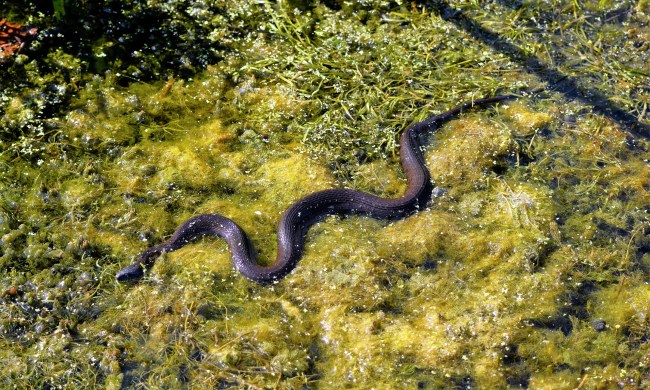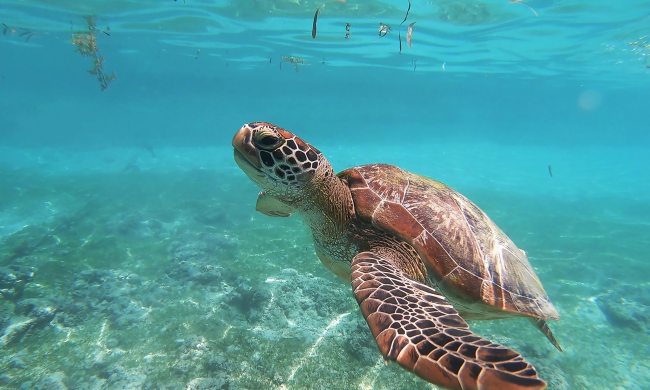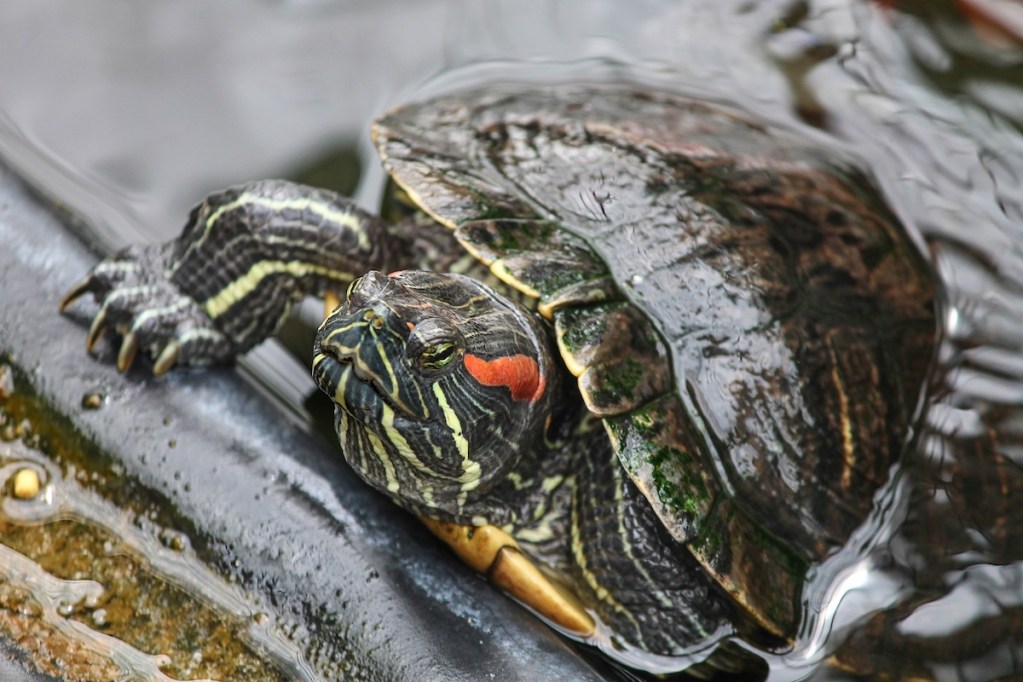
You bring home a little turtle to a beautiful habitat and realize you forgot one big thing: What do painted turtles eat? Because these turtles are an aquatic species, they spend most of their time in the water — both in the wild and in your house. This greatly impacts their diet, especially because as they consume meals, they must swallow under the surface.
Painted turtles are also omnivores and like a wide variety of foods. While many of these can be placed in their housing, you should also have a separate feeding tank, which will massively cut down on the mess. All food from the main tank will have to be scooped out daily; otherwise, it rots. Nevertheless, feeding your turtle can be fun, and occasionally they can even eat what you do.
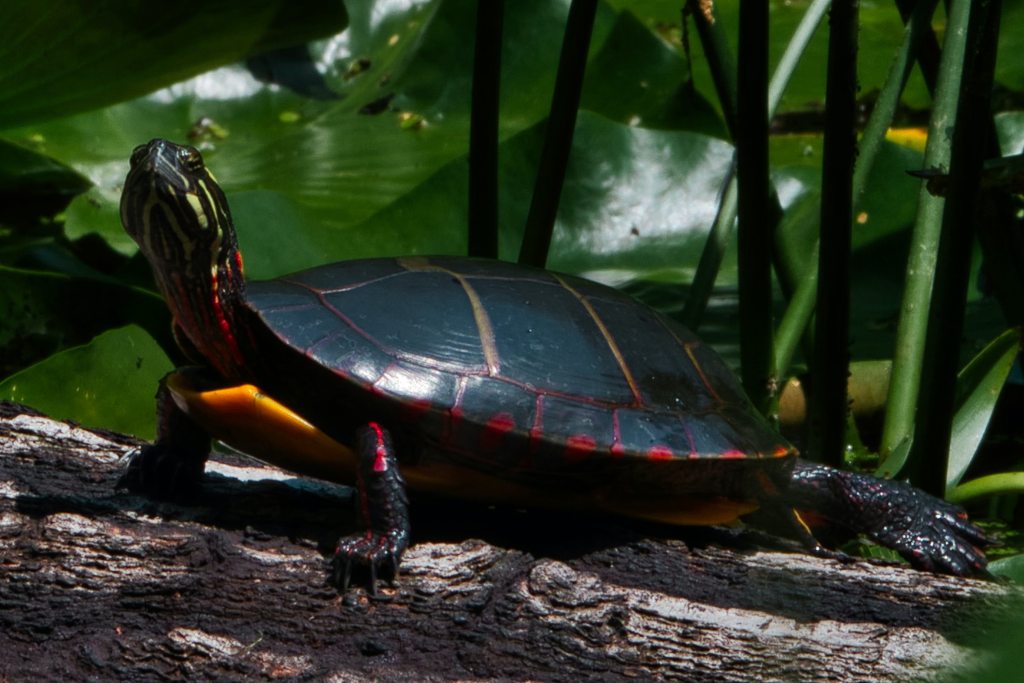
What do painted turtles eat?
When she’s a baby, you should give her food every day, but an adult eats only every two or three days. Also, females get bigger than males and may require slightly more food to accommodate their extra size. Large meals will hopefully take place in a separate tank to cut down on any mess, but you can include some snacks, like leafy greens, for her to nibble in her main home.
You might even clip these to the side of the housing for her to access anytime, and you’ll spot her happily heading over for a midday munching as she desires. As mentioned, the most important thing is variety. Even if she likes a certain morsel best, you need to give her other food items. These things should be the staple of her diet:
- Aquatic turtle pellets from the pet store
- Proteins, such as hard-boiled egg, chicken, and beef
- Leafy greens like romaine, parsley, and kale
- Veggies, such as peppers, green beans, peas, and corn
- Flowers, including roses and dandelions
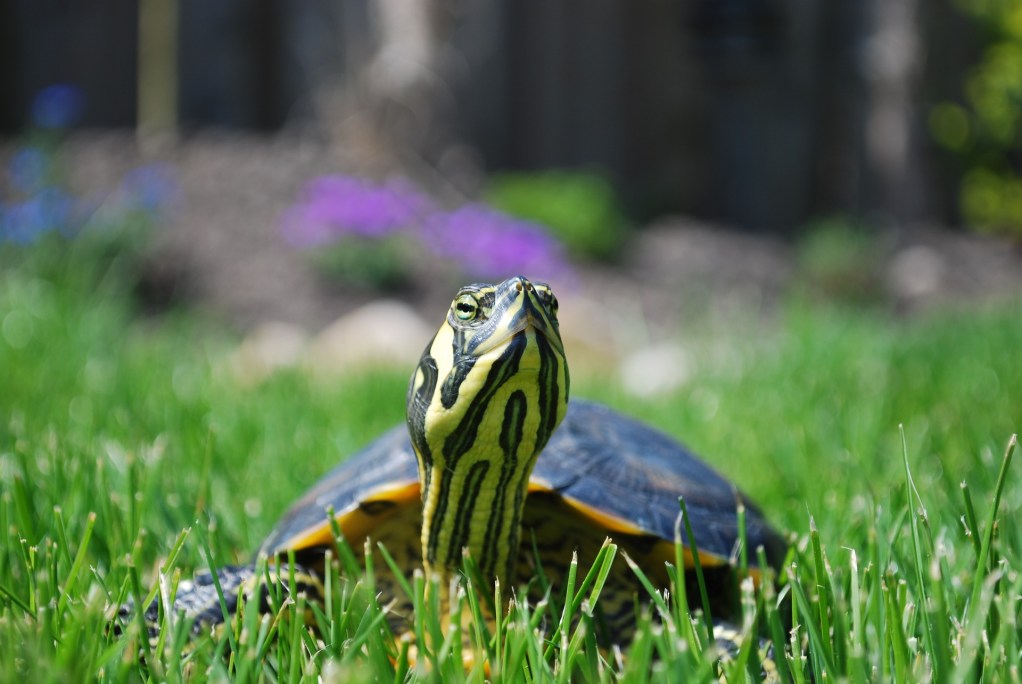
How do painted turtles hunt?
These turtles eat all kinds of things, which means they have various methods for finding food. Turtles and fish possess something called barbels that sense and even taste delicious food that’s coming their way. They use these to find both live food and carrion to snack on.
However, presumably, your turtle won’t always be on the lookout for meals as you’ll feed her at set times. Instead, you can use her hunting abilities as a form of stimulation. She may love to chase after certain animals or sniff out a special treat. Use her hunting instinct to her advantage, as it will help keep her healthy and active.
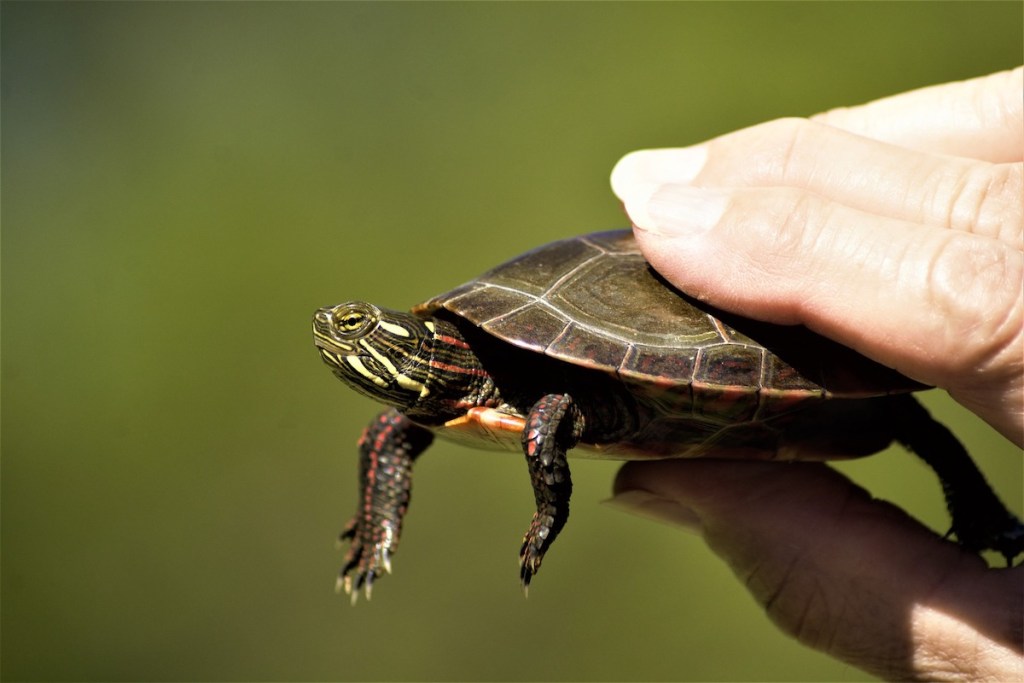
What don’t painted turtles eat?
Even though you want to mix things up for her, there are still some foods that should always be avoided. Many things will fill her up, but lack enough nutrients, and others will provide too much of a bad thing. A little salt is fine, but a lot will harm her, just as it would you. Specifically, you can never give certain types of human sustenance that, while great for our bellies, will not be good for hers. Keep these out of your turtle tank:
- Veggies that don’t include calories, like celery and iceberg lettuce
- Pet food such as dog and cat kibble, because it’s too salty
- Dessert, including chocolate and sugary snacks
- Dairy, since turtles can’t break it down in their digestive system
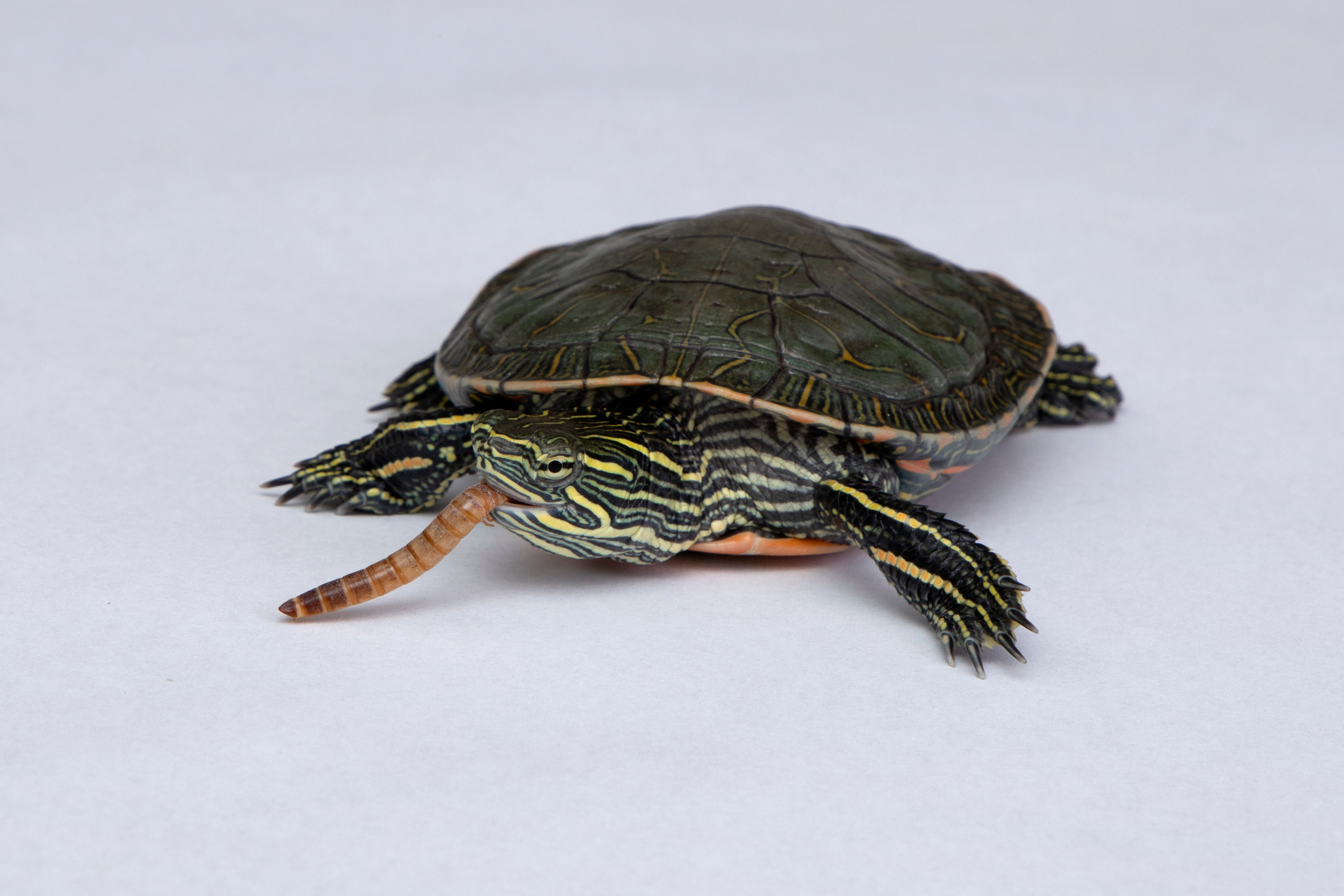
What foods make good occasional treats?
You should stick with about 45% greens, 45% pellets and proteins, and 10% treats. That means delivering a special snack only once a week or so. Lots of delicacies contain too much fat or salt to serve as staples but will allow your turtle an extra delicious dinner. (Think of it as a night out for your pet and pamper her accordingly.)
Put together a calendar system, like a whiteboard, to track how often you put an extra into her meal. Alternatively, pick a “treat day” and stay consistent. This reptile enjoys hunting, so live fish and insects will keep her stimulated and full (it will make a mess, though). As part of her food rotation, you should stick with:
- Feeder fish like guppies and goldfish
- Dried brine shrimp made for turtles
- Fruit, such as blueberries, apples, and strawberries
- Bugs, including crickets and worms
We can’t stress this enough: Your little pet needs a variety of textures, nutrients, and flavors to stay healthy and happy. Keep other parts of the schedule consistent, though, as that will help her stick to a good routine. Even with the perfect diet, you’ll probably want to add supplements — mainly calcium powder or a little calcium block. Dusting food with vitamins and nutrients makes it easy to incorporate them into her meal. Work closely with a reptile vet to establish a really solid feeding plan and update it as your turtle ages. Remember, these little guys live for decades, so you want to ensure you have not just a good meal plan but a solid life plan as well.

